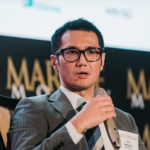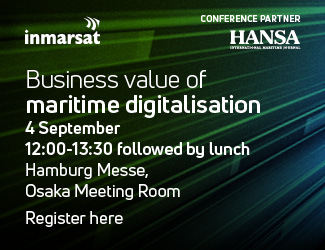While Chinese lessors are still hungry for deals, Japanese and South Korean financiers
are gradually open to foreign clients.
As traditional European banks pull back from ship finance, Asian lenders are plugging the gap, and it is not just[ds_preview] the Chinese finance lessors that are open for business.
In the past year, Japanese banks, tonnage providers and finance lessors have been welcoming foreign clients into their JOLCO (Japanese operating leases with call options) portfolio. Previously, the JOLCO market was largely localised and insular. Speaking recently at a marine finance conference in Singapore, MUFG Bank’s head of aviation, shipping and transportation (Asia Pacific), Jiro Nomura, said: »Traditionally, JOLCO was available only to Japanese ship operators and trading houses. Nowadays, this market is becoming bigger. 2018 wasn’t very active because of the shipping market was weak but my Tokyo colleagues and I feel that the market is more active this year.«
Japanese financial services company FPG AIM, part of Financial Products Group, has been expanding more of its JOLCO services to the maritime sector, said its senior executive director, Shi Lei.
In a JOLCO structure, the vessel is sold to a special purpose vehicle (SPV) which becomes the registered owner that holds the legal title of the vessel. The registered owner then sells partial ownership of the vessel to Japanese-registered owners/lessors, of which the sale is fully underwritten by the asset management company; both Japanese SPVs each hold close to 50% of the economic control of the vessel.
The owners/lessors will then charter the vessel back to the seller/charterer. The SPVs finance the asset purchase by placing equity in partnerships with investors and from bank loans, typically in the ratio 30:70, hence offering 100% financing.
Companies like FPG AIM play the role of an arranger by holding full interest in the vessels’ SPVs without owning the leased assets. Shi said: »In the last five years, we’ve been trying to expand into shipping, from being traditionally focused on aviation.« He said that in 2018, FPG AIM closed 4 bn $ of JOLCO deals, which were evenly split between aviation and shipping. FPG AIM’s non-Japanese shipping clients include Ship Finance International, Orient Overseas International, Pacific International Lines.
Unlike traditional bank debt, which covers up to a certain portion of the vessel price, JOLCO offers nearly 100% financing. It comes with asset depreciation benefits that allow the investors to pay less tax on their funds. Shi explained: »The drawback is that, as JOLCO is tax-driven, the ownership structure of JOLCO assets is rigid. When ship operators consider JOLCO, they have to hold on to the asset for the long term.«
Citi’s director of global shipping, logistics and offshore (Asia Pacific), Vineet Puri, said that the US bank has worked with both major and regional Japanese banks to offer financial solutions to international ship operators.
Besides JOLCO, Japan’s export credit agency, the Japan Bank for International Cooperation, is also looking to support international ship operators, said Vineet. Between 2012 and 2018, Citi arranged 42mill. $ of Japanese ECA financing for around 30 ships. Vineet said, »We have international borrowers going for ECA financing to diversify their funding sources. The loan term for ECA finance can go to as long as twelve years, which is longer than traditional bank debt.«
While Japanese financiers are working with more foreign ship operators these days, the South Korean market has been slower in this aspect. However, this is not to say that South Korean banks and tonnage providers are shutting out foreign clients.
Similar to KG funds
Korea Development Bank’s (KDB) head of shipping finance, Robin Chan, said that the state-backed lender has been extending its client base beyond local shores. Chan said: »KDB is the only project finance institution that’s actively engaging international ship owners. We have the mandate of going out to engage top-tier clients in the international space, as part of the bank’s internationalization drive. We provide a commercial alternative to ECAs, sometimes we complement them when we participate in ECA transactions.«
Chan said that KDB has been active in the past year, closing eight deals involving 1.4 bn $. The bank has around 14 foreign clients with a 105 bn $. Chan said: »Can we do more? Of course, but we’re being extremely selective. We’re not there just focusing on top-tier ship owners, good reputations, solid balance sheets, excellent track records. Of course, we work with commercial banks, not necessarily with Korean content. The most important is that it’s a client which we’re comfortable dealing with.«
Market estimates place KDB’s outstanding balance of maritime finance at around 8 bn $. South Korean shipping fund manager Kukje Maritime Investment Corporation (Kmarin) has also begun working with foreign interests.
Kmarin’s director (project and portfolio management) Ben Kim said, »We offer customized solutions, by buying and managing ships for our clients, providing our clients with funding while allowing them to stay asset-free.«
Kmarin establishes and manages ship investment companies similar to the KG and NS funds in Germany and Norway. Participation in these ship investment companies comes through public offerings and private placement with South Korean institutional investors such as the National Pension Service, the Korea Teachers’ Credit Union, and the Korea Teachers’ Pension Fund, as well as individuals.
From starting out financing container ships, bulk carriers and oil tankers for local clients like Hyundai Glovis and the now-defunct Hanjin Shipping, Kmarin began opening itself to foreign clients, such as BP Shipping, the shipping arm of British oil major BP, around 2017.
This year, Kmarin expanded its portfolio to very large gas carriers and ore carriers. In July, the fund manager ordered eight ore carriers at Qingdao Beihai Shipbuilding Heavy Industry and Jiangsu Yangzi Xinfu Shipbuilding for long-term charter to Brazilian miner Vale.
Slower Chinese leasing?
Chinese finance lessors, which began aggressively offering ship finance around 2015, continue to have an appetite for deals, although they sense that the pace of growth may slow and they will have to review other ways to grow.
An Jingshu, a senior manager at the Industrial and Commercial Bank of China’s leasing unit ICBC Leasing, said that in the last ten years, Chinese finance lessors’ shipping portfolio has grown from 5% to 30% of the world’s merchant fleet.
She said: »Chinese lessors will find it difficult to grow as much as before and we will see more competition. That’s why we’re not only providing leasing now, but also working with cargo interests and tonnage providers.«
Concurring, Zhao Yang, executive director of China Merchants Bank’s leasing unit CMB Financial Leasing, said that over the past five years, his company’s shipping portfolio has grown from 1 bn $ to 5 bn $. He said: »There are challenges not only in developing new markets but also establishing new relationships. How do we manage a big portfolio? There will still be expansion but how do we manage the shipping portfolio? Besides financial leasing and operating leases, some of the Chinese lessors are evolving into tonnage providers and looking at cargoes. We have to comply with China Banking Regulatory Commission’s regulations. After all, we are financial institutions, but how do we operate vessels?«
ICBC Leasing has a long-term Contract of Affreightment with Brazilian miner Vale, and has contracted a number of ore carriers for this purpose. The ships are managed and operated by Hong Kong Ming Wah Shipping, a unit of China Merchants Energy Shipping.
Despite political upheaval and proximity to hostile areas, Middle Eastern ship owners such as the Dubai-based Tomini Group have also managed to close deals with Chinese finance lessors such as ICBC Financial Leasing. Tomini Group CEO Nitin Mehta said: »We’re getting more visitors from China. There’s a lot of interest from Chinese leasing companies.«
Patrick Lee















